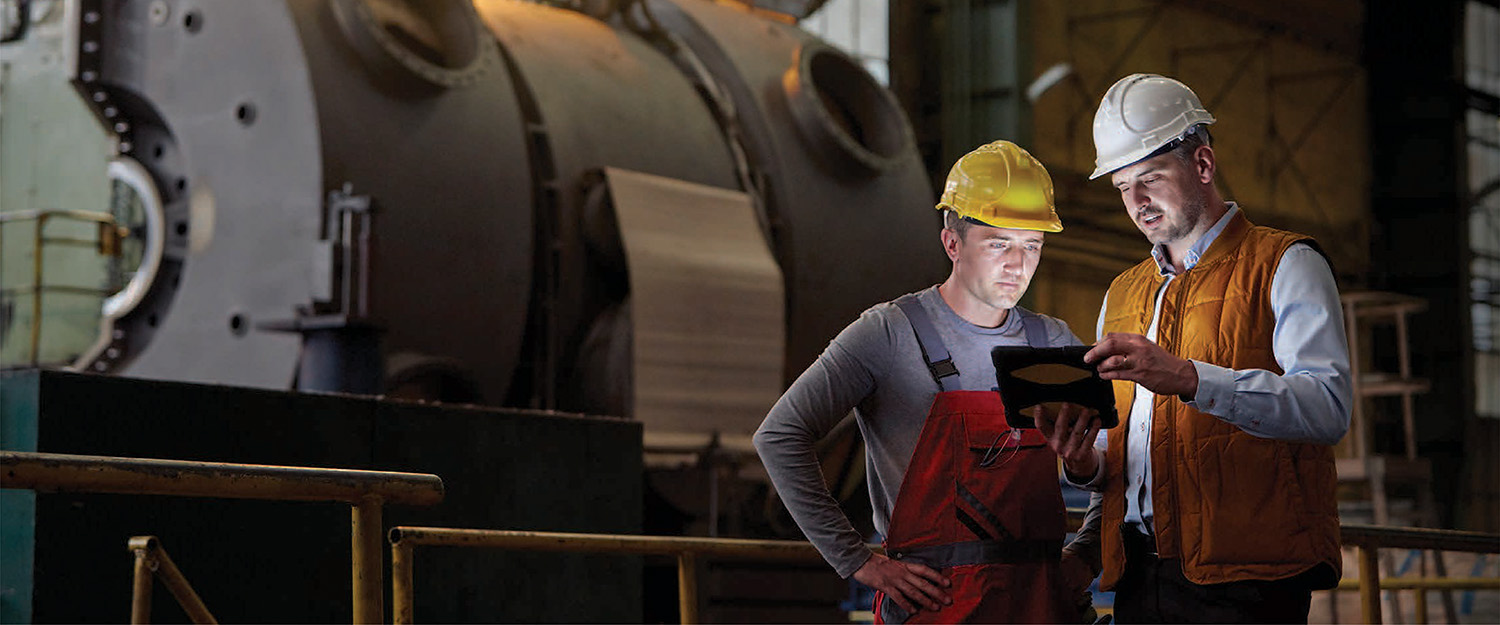Rotating equipment, including motors, pumps and compressors, are the backbone of industrial operations, performing important functions that keep industries productive.
Imagine being able to predict your rotating equipment’s failure before it happens, saving you time, money, and stress. Fortunately, proactive maintenance solutions like vibration analysis make this possible. Knowing what to look for is key to making the most of this technology.
Common Vibration Failure Warning Signs
In many applications, such as pumps, air compressors, fans, and conveyor belts, electric motors play an essential role. Each rotating part in these components produces a unique vibration pattern that intensifies as it ages.
Tracking changes in these vibrations in your equipment can help prevent severe damage and downtime. Here are the key indicators to watch for:
- Increased Intensity of Vibrations: All rotating equipment has a small level of vibration, but when vibrations become more intense, it indicates a potential problem.
- Changes in Vibration Patterns: If the movements cease or change, it’s a sign that engineers need to investigate further.
- Noise: Although noise and vibration are different, excessive noise can be an indicator of problematic vibrations.
- Imbalances: Imbalances, such as uneven weight distribution in the rotating components, can cause vibrations.
- Misalignment: Misaligned gears, shafts, or mounts can lead to vibrations. This includes angular and parallel misalignment.
- Bearing Issues: Loose, improperly lubricated, or faulty bearings can cause vibrations. Indentations on the bearing raceways from wear can also be a sign.
- Loose Foundations: When equipment is not securely mounted, vibrations can increase, leading to further damage.
- General Wear and Tear: Worn-out components such as gears, belts, and bearings can cause vibrations.
- Electrical Imbalances: Defective motor components like rings, rotor windings, and stators can create vibrations. Irregular magnetic attraction between the stator and rotor also contributes to this issue.
- External Influences: Vibrations can originate from external sources such as other machinery or environmental factors.
- Increased Vibrations in Motor Frame: If the motor frame vibrates excessively compared to the equipment itself, it indicates a potential weak base or improper mounting.
- Shaft Vibrations: Vibrations originating from the equipment’s rotor need to be monitored using appropriate tools like proximity probes or shaft sticks.
Recognizing the signs of mechanical problems in industrial equipment is only part of the solution. By using proven diagnostic methods like vibration analysis, businesses can take proactive steps toward reliable performance and longevity.
What is Vibration Analysis?
Vibration analysis, also known as vibration monitoring, is a vital tool for identifying, monitoring, and preventing mechanical problems in rotating and reciprocating machinery. It is a key component of a predictive maintenance program, enabling the early detection of issues to avoid costly unplanned downtime and catastrophic failures.
How it Works
Vibration analysis uses velocity sensors and displacement sensors to measure the oscillatory movements of machines and their parts. By employing these sensors and other advanced technologies like vibration recorders, accelerometers, and vibration data loggers, it can accurately detect and record the intensity (amplitude) and frequency (periodicity) of vibrations.
Some vibrations are normal and expected, while others can serve as red flags, indicating potential issues that need attention. Several key parameters are measured to analyze these vibrations effectively.
KEY PARAMETERS:
- Amplitude: Measures the magnitude of the vibration, typically in units like displacement (mils or micrometers), velocity (inches per second or millimeters per second), or acceleration (Gs).
- Frequency: Reflects the number of oscillations per unit of time, expressed in Hertz (Hz).
- Phase: Represents the relative timing of the vibration waveform, usually measured in degrees.
By measuring and interpreting these parameters, issues such as imbalances, misalignments, looseness, bent shafts, and bearing defects can be detected early. This allows for a more accurate assessment of the health and performance of industrial equipment.
Benefits of Vibration Analysis in Industrial Equipment Maintenance
Well-maintained equipment is important for the smooth operation of industrial and manufacturing processes. Incorporating vibration analysis into your facility maintenance will provide:
Early Detection of Problems
Vibration analysis can identify developing faults in industrial equipment long before they become apparent to the human senses. Early detection allows maintenance teams to schedule repairs or replacements before a failure occurs, minimizing downtime and increasing productivity.
Reduced Downtime and Maintenance Costs
By assessing the severity of equipment faults, vibration analysis helps maintenance teams prioritize tasks and allocate resources more effectively. Addressing faults early helps organizations avoid expensive repairs and equipment replacements, resulting in substantial cost savings and improved equipment reliability.
Extension of Equipment Lifespan
Predictive maintenance based on vibration analysis can extend the lifespan of industrial equipment. By identifying and correcting issues early, the overall health and performance of equipment are preserved, reducing long-term capital expenditures.
Effective Maintenance Strategies with Vibration Analysis
Vibration analysis is a powerful tool for maintaining industrial facilities and plants. By including this practice in your maintenance strategy, you can decide whether to repair or replace equipment before a complete system failure occurs.
This approach effectively manages risk, reduces costs, increases safety, and improves energy efficiency. Ultimately, it helps extend the lifespan of critical equipment, providing long-term savings and reliability for industrial operations.
ISS: Your Motor Maintenance Experts
At Industrial Service Solutions (ISS), we provide vibration analysis alongside our electric motor maintenance, repair, and service offerings. These services allow our technicians to detect issues like imbalances, misalignments, and bearing defects early on, minimizing downtime and optimizing the performance of your industrial equipment and power systems.
Curious about how vibration analysis can benefit your operations? Contact ISS today to learn more about our comprehensive maintenance solutions.


